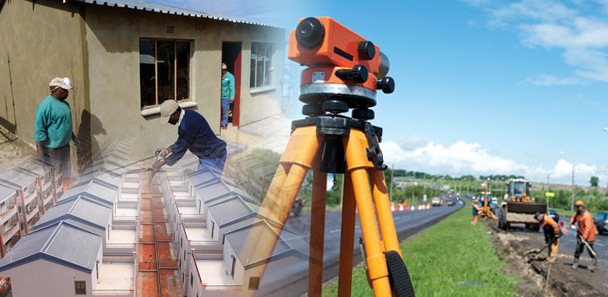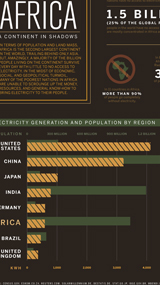Construction represents a key pillar of the Consortium's combined expertise and would typically include offices blocks, large shopping malls and commercial centers, residential complexes from a small development to vast housing estates with parks, schools, hospitals and shopping malls. Several of the Consortium's members have built large conference centers and large international airports
A construction project would follow the traditional process of combinations of the below:
-
PROJECT MANAGEMENT

Target Projects is as an established Development and Project Management Consultancy with a strong history of delivering high profile projects in South Africa and one of the few that has vast experience with large scale multi-stakeholder infrastructure and mixed-use projects.
Target Projects has acted as project leaders on several prominent fast-track government projects in South Africa where a strong emphasis has been placed on business planning, strategic stakeholder engagement, financial and programme management in addition to Development & Project Management.
-
ARCHITECTURAL DESIGN

KMH Architects are based in Cape Town and Johannesburg, and will provide the necessary skill-set associated with design, layout and conception of all architectural elements including all residential and commercial construction projects proposed by the Consortium.
KMH Architects is recognized as one of the oldest architectural practices incontinuous business in the world and celebrated its centenary in October 2012.Established in Cape Town in 1912 the practice has evolved through five generations of partners, maintaining a tradition of professionalism, expertise and partner custodianship which ensures the baton of partnership passes to the next generation. This continuity will carry KMH into its next century and beyond.
In its 100 years, KMH has completed over 3 000 buildings in Cape Town, Johannesburg and other cities and towns in South Africa and Africa and has won many awards for excellence. KMH practises architecture, interior design and space planning out of offices in Cape Town and Johannesburg for South African and international clients. Their service philosophy is to create buildings that inspire, are distinctive in design, sensitive to the nuances of place, precedent and environment and meet our client's project brief, design, budget and programme requirements. KMH is a member of the Green Building Council of South Africa (GBCSA) and has the capacity and certified Green Star SA accredited professionals to design green buildings according to the GBCSA Green Star Rating System.
-
ALTERNATIVE ENERGY

API Holdings – API Holdings Ltd was founded in 2008 with the primary objective of providing high quality, independent advice, and support services to stakeholders and organisations involved in sustainable development and renewable energy projects.
A key component of the company is the scoping and feasibility expertise and processes that offer informed and sound advice to clients at a project specific level. API provides expert technical, environmental, and planning support advice to utilities, developers, industry, API communities, governmental, and the public sector throughout the entire project life-cycle from the initial feasibility stages, through to implementation, as well as completed and ongoing operations. One of the company's key areas of expertise is in Waste to Energy (WtE) - the process of creating energy in the form of electricity from the pyrolysis and gasification of a feedstock of various waste arising’s.
The proposed technologies can produce both electricity and heat which can either be used locally or put directly into the grid system. The processes create a clean gas from the waste which can be either transported as a gas or used within a reciprocal engine generator. Heat can be converted via an exchanger for steam creation or refrigeration/cooling systems dependent on local requirements. The plants are proven and are known as best available technology (BAT), that is clean with low emissions, operating well below the required EU and US emission regulations and requirements. The plants are modular and can be designed to handle the local waste arising’s. This can range from 10,000 tpa up to 120,000 tpa on any given two hectare site. The optimum site and waste level of conversion is 60,000 tpa which will give a consistent output of 4 MWh of electricity or up to 15 MWh of gas depending on requirements, and a minimum of 8,500 operating hours per annum. The plants are designed to dispose of waste in a “green” manner producing a more environmentally friendly energy source, as well as hot water, sterilized recyclable glass, metals, and the potential sale of sterilized ash. The pyrolysis residue generated from the plant can also be used to compliment animal feedstock, thus adding a fertilizer component to the Plant. The insert residue can be used to produce soil fertiliser.
Other applications of the residue include road aggregate (rocks and sand), brick making (low cement type brick stocks), and imitation wood substitutes when combined with resin. Plants of this nature could recoup their initial investment within a 5 year period, depending on the size of the plant and how efficiently it is run. The plants require low maintenance. Houses and business would have the electricity they so desperately need and the government would be disposing waste in a significantly cleaner manner. This essentially will have a two pronged effect, as the technologies employed will produce vital electricity, as well help mitigate the generation of waste, and thus form an important part of the overall projects waste management plan. Informal settlements, where there is disease due to the pile up of waste, would begin to look cleaner as the residents would be encouraged to drop off their waste in order for them to receive electricity for a reduced price. Due to the low emissions, these plants could also earn additional revenue from international incentive schemes such as carbon finance, also known as carbon credits, through the Clean Development Mechanism (CDM) under the United Nations. Since the plant is modular, it can be increased and can accept more than 60,000 tons of waste which would also increase the electricity supply.
-
CARBON CREDITS

World Carbon Exchange - API Holdings Ltd is the owner of World Carbon Exchange (WCX). WCX was developed to address and implement services focused primarily on the environmental and carbon finance industries. WCX offers new projects, as well as existing organisations, the means of incorporating emission (primarily CO2), water and waste data, into their wider sustainability and business objectives. This in turn aids relevant stakeholders to manage Greenhouse Gas (GHG) emissions to maximise ROI and on-going revenue from cost-saving reduction activities and sustainable technological solutions. Carbon credits create a market for GHG reduction by giving a monetary value to pollution. The concept of carbon sequestration was enshrined in the Kyoto Protocol Conference in 1997 in order to contain and reverse the build-up of CO2 in the atmosphere in order to reduce the greenhouse effect. Under this scheme, and through the CDM, specific reduction targets on emissions have been proposed for developed countries.
A key focus of the company is to establish a sound understanding of the carbon market and offer clients a competitive advantage in their respective projects and developments. WCX works with corporates and organisations in creating and implementing carbon reduction management strategies, including carbon offsetting and sequestration, as well as advises clients on the most feasible and beneficial routes forward in the carbon finance industry. WCX has clients across a range of sectors such as renewable energy, agriculture, waste management, and forestry. -
EFFLUENT WATER SYSTEM

Cooltechnology specialise in the design and manufacture of bespoke mobile and containerised water and effluent treatment units for small scale residential and commercial. The objective is to provide an environmental friendly wastewater treatment system offering a high quality products and proven technology. The system readily and consistently meets the secondary treatment standards of 9 mg/L CBOD5, and 9 mg/L TSS. Because the system is equipped with built-in pretreatment, no additional septic tank is required. The system's two types of media provide a stable environment to ensure strong bacterial colonies remain even after the high flow events that may impede the performance of normal septic tank. Given the need for greener solutions within the water and effluent treatment sectors they provide a wide range of UV (Ultra Violet) and Ozone (O3) solutions to replace the outdated use of chlorine and chemicals in sterilisation processes throughout the water purification sectors. Plants have been supplied to a number of leading mining houses throughout Central and Southern Africa.
All materials are noncorrosive in the septic environment. Media never needs to be removed or replaced. The systems are compact, efficient and designed to be installed in a typical residential/commercial environment. Maintenance: The system requires semiannual maintenance whilst the discharge is safe into either a soil absorption system or on the surface. -
QUANTITY SURVEYANCE

The LDM Group is one of the leading Quantity Surveying practices in South Africa. The company adds value through efficient cost planning and management. The Group have progressed and developed services to satisfy a broad variety of Client and Community needs and provide a practical solution that is individually tailored for each project. The Group aims to provide a one stop shop, where clients are able to contract with a single entity for delivery on projects, minimizing risk and exposure. LDM has the support of a large team of highly qualified and experienced professionals of diverse talents and considerable levels of management skills. LDM assesses the scope of projects, addresses the risk, establishes clear objectives and implements a strategy for achieving the defined objectives. They undertake to provide all the human and technical resources deemed essential to execute the commission through to a successful completion.
Established in 1984, the LDM have been involved in numerous prestigious projects in South Africa such as Gautrain Rapid Rail Project, King Shaka International Airport Durban, Sandton Convention Centre, Investec Bank Offices in Cape Town, Cape Town International Convention Centre, Cape Town International Airport 2010 Upgrade and many others. They have over 120 permanent staff in the country with an average annual turnover in 2012 of R88 Million. The Engineering expertise will initially focus on the areas of Energy and Water associated with construction of houses and offices, including solar photovoltaic energy connected to the grid and offshore wind farms. Focus will also be targeted at protecting water resources and finding solutions to optimise water usage within the housing construction project. Several of the Kay-Players provide wastewater treatments and storm-will water management solutions as well as solutions for drinking water. Page 18 Modus Operandi – February 2013 With the surge in urban development, sanitation has become a major global issue that will require a great deal more effort and investment. Each town or city has specific infrastructure requirements, and wastewater collection will remain a key focus in solution that are provided.
-
CONSTRUCTION

OPES Development (Ivory Coast) is the construction company that specialises in the field of building and development using new and improved building systems that drastically reduce direct and indirect costs of the construction process using a system that combines all the advantages of armed concrete with all the insulating qualities of expanded polystyrene (EPS) whilst guaranteeing a great structural capacity and an excellent thermal performance. The technology is a seismic-resistant, thermally-insulating building system based on a set of structural panels made up of undulated expanded polystyrene with a basic frame attached to the panels’ sides. The frame consists of highly resistant steel meshes and corrugates bars linked together with electrically-welded steel connectors. The building technology has been approved with the Technical Suitability Document (DIT) issued by the Instituto de Ciencias de la Construcción (Building Science Institute) Eduardo Torroja.
The flexibility of the projects and simplicity of assembly make possible any kind of building, from detached houses to high rise buildings. As it is thought as an open system, it also allows the combination with other traditional and non traditional building systems.The panels are installed in the building site according to the layout of the walls, partitions and frameworks of the project and they are completed also on site by applying micro-concrete through a mechanism of pneumatic discharge. Thus, the panels constitute the structural elements of the vertical and horizontal closings of a building. This is a system of “fluid joints” since the join between the various elements of the system is continuous. Therefore, once the concrete has been discharged there are no horizontal or vertical joints. OPES Development is involved in numerous projects in the Ivory Coast and it is from this well established vantage that the company proposes to expand the rapid construction technology throughout Africa.





